Eulachon grease meets the tongue with a marine burn, a bracing tang extracted by fermenting great numbers of the smelt-like fish, then simmering and breaking them apart. The process liberates the fish’s oil, which historically formed a kind of currency among the Indigenous nations of the Pacific Northwest, who traded it as a valuable source of fat.
Today, those still able to find it in southeast Alaska apply it as a condiment to boiled potatoes, herring eggs or kajumps, a fish soup.
“That’s real gold there,” Louie Wagner says, as he eyes a jar of the grease he keeps frozen, its contents a light tawny yellow. “Gold you can eat.”
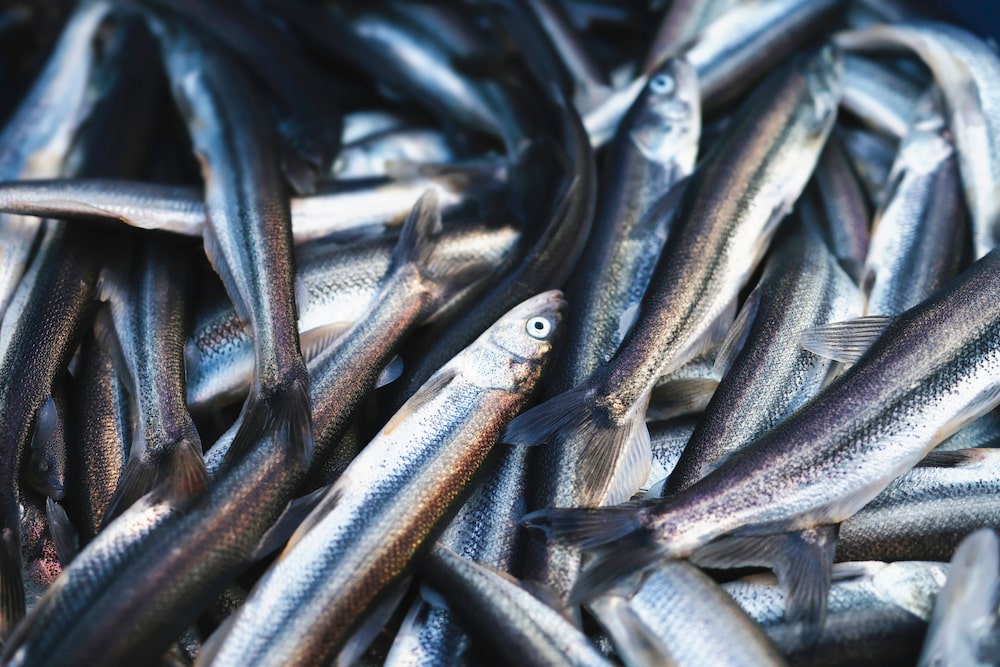
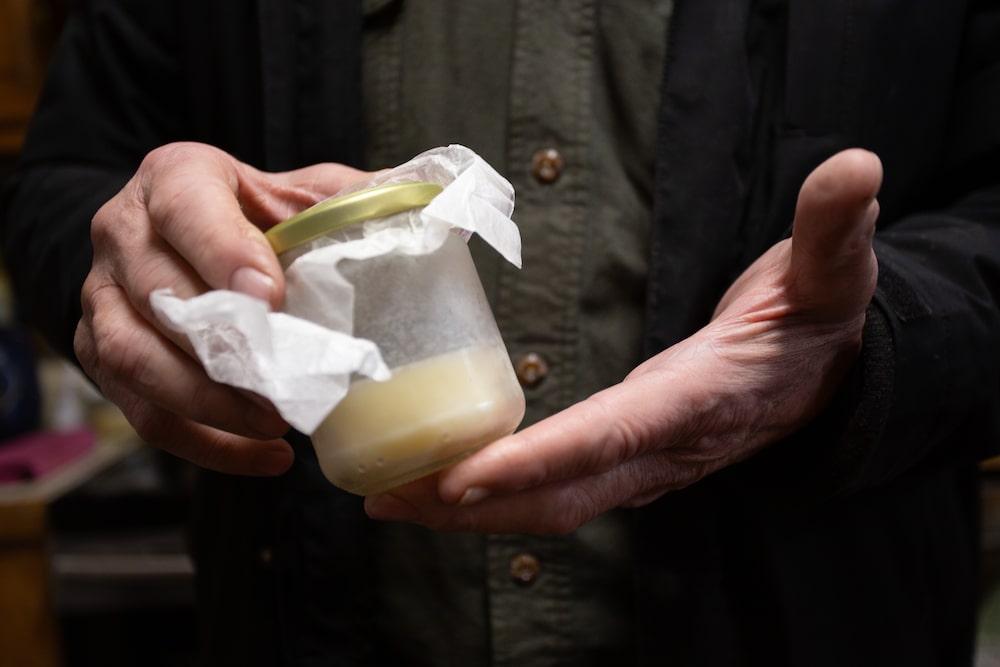
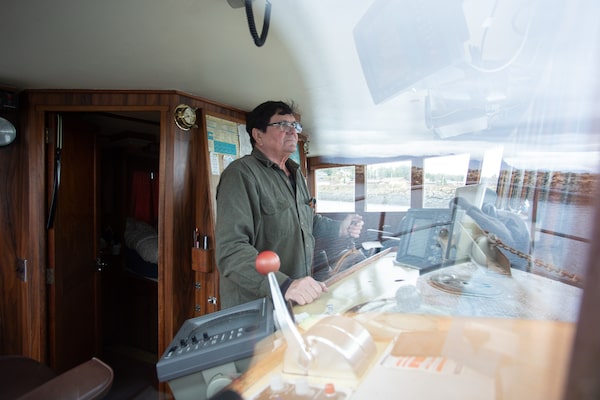
Mr. Wagner worries about environmental risks to the Unuk River's fish from mining on the Canadian side of the border, a region where B.C. estimates there are billions of dollars worth of minerals to be found.Nathan VanderKlippe/The Globe and Mail
There is other gold nearby, too, its lustre buried not far away, although it lies inside the bounds of another country. In the mountains where the edge of Canada shoulders up against the verdant coastal finger of southeast Alaska, the mining industry has spent years working to bring new development to northwestern British Columbia’s Golden Triangle, an area whose mineral wealth the province estimates at $1.28-trillion.
Mr. Wagner is more concerned with the eulachon, which he has, since childhood, harvested from the mouth of the Unuk River, a fast-moving waterway that tumbles 130 kilometres down from the glaciated peaks of northwestern B.C. to Misty Fjords National Monument in Alaska.
He is descended from Indigenous peoples who knew no border. Now, he and members of other Alaskan tribal groups are asking to be recognized as Canadian Indigenous people for the purpose of influencing development of one of those B.C. mining projects.
They are relying on a recent Canadian Supreme Court case that found that Indigenous people in the U.S. can be considered Aboriginal peoples of Canada. It is a decision that has shifted the legal landscape in Canada in ways that have yet to be fully understood, redefining a matter as fundamental as the boundaries of the country. Mr. Wagner aims to test its implications for Canadian mining, an effort that will almost certainly have reverberations for resource development along a Canada-U.S. border that bisects the traditional territory of numerous Indigenous groups.
In its upper reaches, the Unuk traverses Canadian land studded with minerals, some of them critical to reducing dependence on fossil fuels. Northwestern B.C. has produced 150 mines; four more are under development. Two such projects are in the Unuk watershed, including the KSM Project, which is called the world’s largest undeveloped gold project by miner Seabridge Gold Inc. Another, Skeena Resources Ltd.’s Eskay Creek, is in the permitting stage. Both are Canadian mining projects, supported by B.C. Indigenous groups and regulated by the provincial government.
But 40 of the river’s kilometres lie inside the U.S. The Unuk reaches saltwater 110 kilometres from Metlakatla, Alaska, the small Indigenous community where Mr. Wagner’s home offers a sweeping view of the waters that have sustained generations of his family. His ancestors in the Tlingit Teikweidí, or Brown Bear clan, marked the Unuk River with a sun symbol, which he believes establishes claim to its reaches. “That belongs to us,” he says.
“To us, that border doesn’t exist,” says Cindy Wagner, his wife.
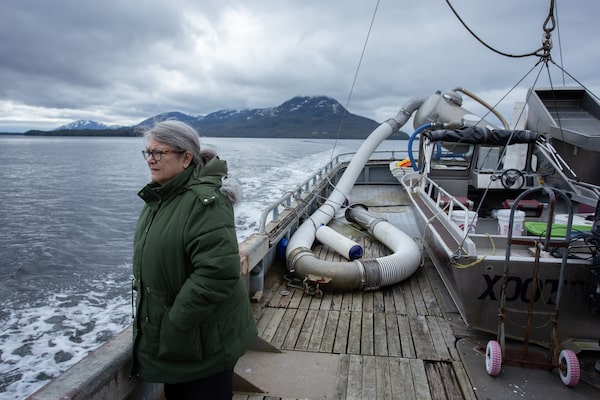
For Tlingit, the eulachon's arrival traditionally signals the end of winter. When speaking of the Unuk, Cindy Wagner recalls old Tlingit laws that forbade one clan taking from the river of another. It ‘could cause a war if you robbed it,’ she says.Nathan VanderKlippe/The Globe and Mail
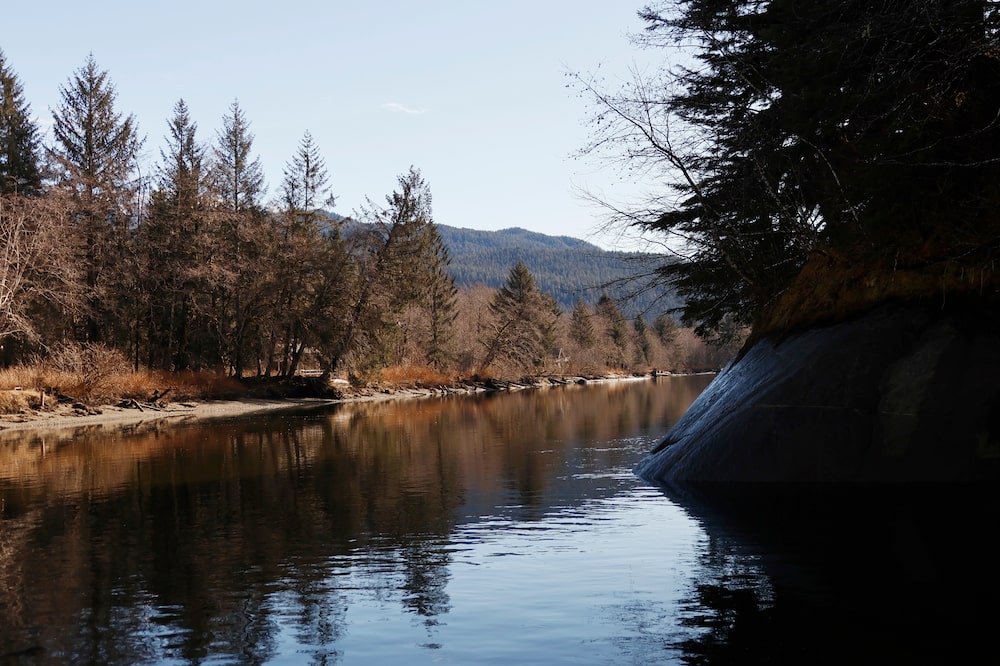
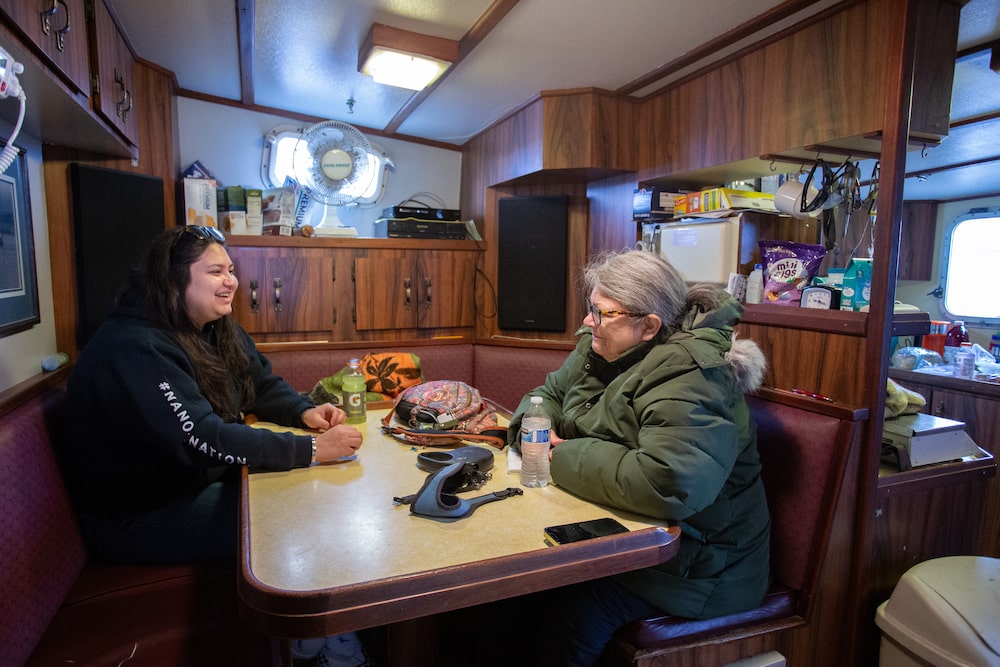
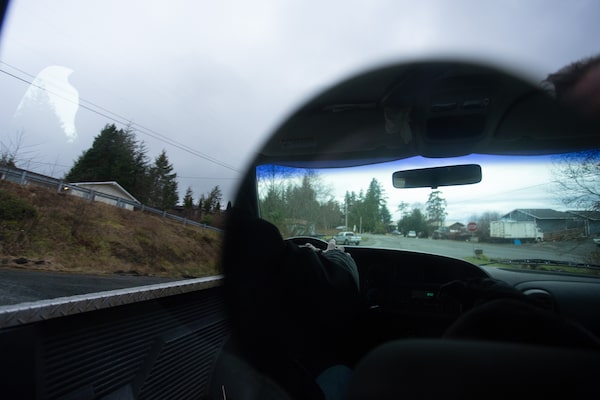
The Wagners live in Metlakatla, founded by a Tsimshian group from B.C. in 1887. It is one of several Alaska communities where people make a living on watersheds connected to Canada.Nathan VanderKlippe/The Globe and Mail
The border of southeast Alaska was finalized in 1903. But it has never been a strong divider, particularly among northwest peoples. Even today, eulachon grease is traded from B.C. to Alaska. Marriages are common between people on both sides of the border. The community of Metlakatla was founded in 1887 by 800 Tsimshian people from B.C., who were led there in canoes by William Duncan, an Anglican missionary. Some local residents, descended from that group, still hold Canadian Indian status cards.
One of them is Ms. Wagner.
When she speaks about the Unuk, she thinks back to old Tlingit law, which held that taking from another clan’s river was no small matter. It “could cause a war if you robbed it,” she said.
For Mr. Wagner, the bigger question is the eulachon – pronounced “hooligan” – which run into the Unuk over a few days every spring. Arrival of the fish traditionally heralded the end of winter, their harvest greeted with feasting, smoking and the manufacture of eulachon grease in enormous cooking vessels 2,400 litres in size.
“That’s one fish we could eat every day, it’s so good,” Mr. Wagner said. But past experience – including the catastrophic 2014 tailings failure at the Mount Polley mine and ongoing leakage from the older Tulsequah Chief mine in the Taku River watershed – has given him little comfort in the safety of mining in B.C., even if Skeena has promised that its Eskay Creek will protect water.
“The mine is going to kill that river,” Mr. Wagner says.
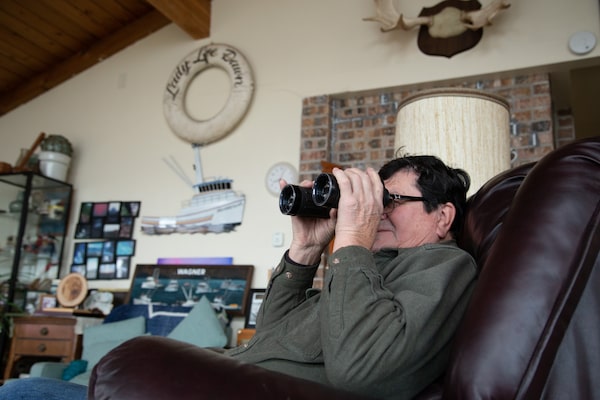
From his home, Mr. Wagner keeps an eye on vessel traffic. 'That belongs to us,' he says of the Unuk.Nathan VanderKlippe/The Globe and Mail
Earlier this year, seven Alaska tribal governments wrote to the B.C. government’s Environmental Assessment Office to “formally request recognition as ‘Aboriginal Peoples of Canada,’ ” entitled to “constitutionally protected Aboriginal rights in the Canadian section of the Unuk River watershed.”
They want to build on a precedent set by the 2021 Desautel decision, in which Canada’s Supreme Court found that the Lakes Tribe in eastern Washington state should be considered Aboriginal peoples of Canada, given their historical use of land that is now B.C.
The Lummi Nation in northwestern Washington state has since requested a similar Canadian designation as it seeks to intervene on a Port of Vancouver terminal expansion. The federal government has already asked a federal court to toss out that application by the Lummi. Ottawa argues that it conducted sufficient informal consultation, although the case is still under way.
The Alaska groups’ request for such recognition has prompted discussions between the province and the federal government, raised the possibility of conflict with Canadian Indigenous groups more supportive of resource extraction and drawn sharp criticism from the B.C. mining industry.
“We want the governments of British Columbia and Canada to step up and defend B.C.’s regulatory regime and the integrity of the decision-making process,” says Michael Goehring, president of the Mining Association of British Columbia. “Environmental assessment decisions around whether a project proceeds in B.C. must be made in Canada, not by interests in the United States.”
For Indigenous people, however, the border is an unwelcome colonial legacy. It’s a matter of how “to remove the border” as a consideration in “whether or not Indigenous people who live anywhere have a right to enjoy their territory in Canada,” says Louise Mandell, a pioneering lawyer who has spent decades practising Indigenous law. “The border is just a non-factor for that question.”
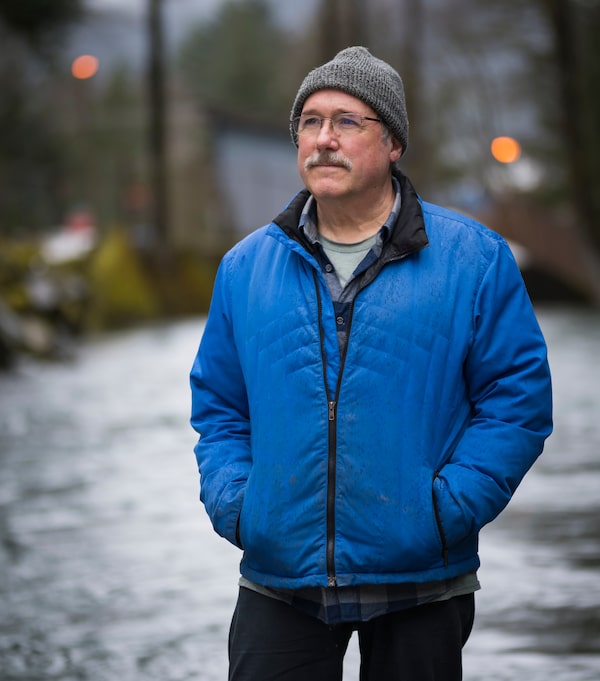
Guy Archibald is an environmental chemist with years of experience working on transboundary mining issues between B.C. and Alaska.Christopher Miller/The Globe and Mail
Canadian mining companies have partnered with Indigenous governments in B.C. to pursue projects in the province.
But eliminating the border from consideration may create new difficulties for Canadian resource development, as U.S. groups with little to gain from mining development seek the ability to have a say in the outcome of projects they would like to see shelved.
Guy Archibald, the executive director of the Southeast Alaska Indigenous Transboundary Commission, does not believe mines can co-exist with healthy fish stocks.
“The two main uses for gold are vanity and fear. And yet we’re destroying renewable resources like salmon for gold to sit in a vault somewhere,” says Mr. Archibald, an environmental chemist and ex-miner.
The seven tribal governments seeking recognition in Canada – the Craig Tribal Association, Hydaburg Cooperative Association, Ketchikan Indian Community, Klawock Cooperative Association, Metlakatla Indian Community, Organized Village of Kasaan and Organized Village of Saxman – would like Canadian funding to participate in environmental monitoring. They may want more, too, Mr. Archibald says.
If a “tribe wants to say, ‘Hey, I want 2 per cent of smelter returns’ – that’s the tribe’s decision,” he says. “Far be it from me to say you should not profit from it.”
The request for recognition in Canada has been filed as part of the B.C. environmental-assessment process for the Eskay Creek project, a bid by Skeena Resources to begin open-pit mining at a gold- and silver-rich site where underground extraction took place from 1994 to 2008.
The Alaska request is underpinned by research that drew on oral histories and accounts by early western visitors to demonstrate historical use of the Unuk River by groups in the U.S. The river is called the Jòonax̱ by the Tlingit – the name means “revealed through a dream” – and multiple Tlingit clans historically resided along its banks, says Irene Dundas, the cultural heritage specialist with Ketchikan Indian Community. The river had an abundance of salmon, but also moose, bear, porcupine and beaver. Its headwaters were a place of refuge during a long-ago flood. Even nomenclature points to historical use.
“We have place names all the way up the river,” says Ms. Dundas, who has spent decades interviewing elders, conducting research on clan objects and doing genealogical work. “It has always been a place of wealthy resources.”
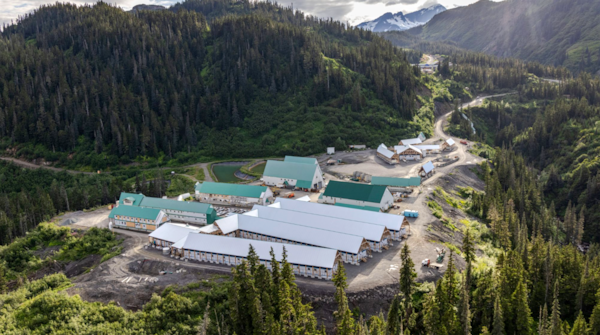
At B.C.'s Eskay Creek, Skeena Resources spent 14 years extracting silver and gold underground, and now wants permission to switch to open-pit operations.Supplied by Skeena Resources
The request for Canadian Aboriginal status is geographic in scope, seeking to establish recognition of Canadian Indigenous rights for Alaskan groups to the Unuk watershed, an area that also encompasses other projects – such as KSM and Newmont Corp.’s Brucejack mine, which is already in operation.
If the groups succeed in their application, similar requests could be made for two other major rivers – the Taku and the Stikine – that originate in Canada before flowing through Alaska, says Ramin Pejan, a senior lawyer with Earthjustice, which represents the Southeast Alaska Indigenous Transboundary Commission in a parallel proceeding that has sought a hearing into B.C. gold mining before the Inter-American Commission for Human Rights.
Indigenous groups in southeastern Alaska “are in all the watersheds. It’s their traditional territory,” he says.
With the Unuk application, the aim is “to have a seat at the table in the same way as if the arbitrary border wasn’t there,” Mr. Pejan says.
In B.C., however, industry and the province argue they have already provided scope for Alaskan groups to participate. The B.C. Environmental Assessment Office has, since 2021, engaged with the Southeast Alaska Indigenous Transboundary Commission on the Eskay Creek project, giving updates and opportunity “to review and provide comments and feedback on the environmental assessment application information,” says Walter Coles, executive chairman of Skeena Resources.
In 2022, B.C. reached a groundbreaking agreement with the Tahltan Central Government in Dease Lake, B.C., which will make Eskay Creek “the first mining project to have permits authorized by an Indigenous government,” Skeena said in a corporate statement at the time.
The company, Mr. Coles said, is also committed to “engaging with Alaska tribes,” as well as regulatory bodies in the U.S. and Alaska, “to understand and address concerns expressed by Alaskans and Alaska tribes.”
But “any unresolved Aboriginal rights and title adds to uncertainty,” said Rudi Fronk, the chairman and chief executive of of Seabridge Gold, which is pursuing the KSM mine.
Seabridge conducted 140 meetings with Alaskans, including regulators and tribes, between 2008 and 2014. Alaskan “concerns and opinions are heard and taken into account when a permit application is under consideration in Canada,” he said in a statement. But, he added, “our invitations to the Southeast Alaska Indigenous Transboundary Commission, which represents the Southeast Alaska tribal leaders and community members, have not been responded to.”
Even so, discussions with Indigenous groups on both sides of the border have resulted in changes to the design of the mine and its water-management strategy, he said.
Representatives from Seabridge Gold and regulators visit the site of the KSM mining project. The mining firm said it conducted 140 meetings with Alaskans from 2008 to 2014.CNW Group/Seabridge Gold Inc.
The B.C. government says it is reviewing the Alaska application, but suggested it may be for Ottawa to decide. “The Government of Canada has an essential role in reviewing and responding to claims by Indigenous nations outside of Canada to section 35 rights,” Murray Rankin, B.C.’s Minister of Indigenous Relations and Reconciliation, said in a statement. Section 35 of Canada’s Constitution Act affirms Aboriginal rights.
Mr. Rankin said he has already raised the issue with Gary Anandasangaree, the Minister of Crown-Indigenous Relations, “and I look forward to working with Canada and First Nations to further this process.”
Representatives of the Tahltan and Nisga’a in Canada, both of which have existing relationships with mining companies, did not respond to a request for comment. Ottawa says it is working with B.C., but has not yet decided what to do.
“Canada is working to ensure that we address the Supreme Court’s decision in Desautel in a way that respects our commitment to reconciliation with Indigenous Peoples and the direction the Court provided,” Anispiragas Piragasanathar, a spokesperson with Crown-Indigenous Relations and Northern Affairs Canada. He added that Ottawa “has not made any determination” of whether the Alaska group “qualifies as Aboriginal Peoples of Canada.”
History has shown that governments tend to be slow to respond to major legal changes, said Ms. Mandell, the lawyer.
Gitxsan people in Vancouver celebrate the Supreme Court of Canada's Delgamuukw ruling in 1997, which upheld Indigenous title.Chuck Stoody/The Canadian Press
The reckoning with the Desautel decision reminds her of the circumstances around the earlier Delgamuukw case, where the province of B.C. litigated to deny the existence of aboriginal title, only for the Supreme Court to affirm it. Only then were steps created to weigh such claims.
“But it took a lot of court time. It took 40 years of my life,” Ms. Mandell said.
“When you have a status quo that gets interrupted, it’s going to be messy,” she added. “But that’s not the test as to what the right thing is to do.”
What’s needed, she says, is funding for Indigenous groups to create forums in which they can sort out competing claims on their own – and government processes to weigh requests from U.S. groups outside of court.
Without such steps in place, however, Indigenous leaders in Alaska say they are prepared to fight for their Unuk River case.
“We are very committed to the health and safety of the Jòonax̱, and using any tool in the toolbook to make that happen – including litigation if necessary,” said Gloria Burns, vice-president of the Ketchikan Indian Community’s Tribal Council.
A 2021 joint transboundary waters report conducted by Alaska and B.C. said two years of aquatic sampling in the Taku, Stikine and Unuk watersheds, where mining has taken place for many years, found no pollutant levels in excess of Alaska Water Quality Standards downstream of the B.C.-Alaska border.
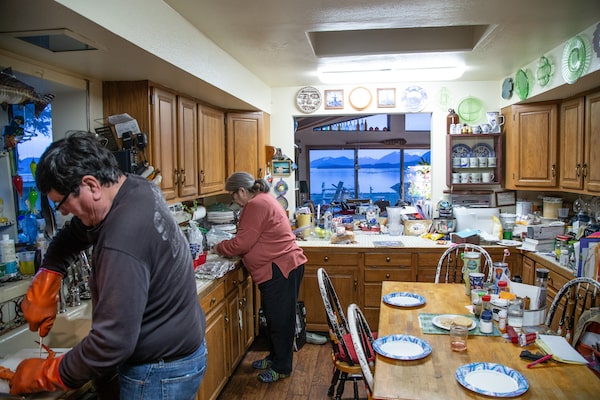
At home in Metlakatla, the Wagners make king crab for dinner. Preparing the eulachon they catch is a more complex operation, involving huge 2,400-litre cooking vessels.Nathan VanderKlippe/The Globe and Mail
But eulachon numbers on the Unuk have already plunged low enough that fishing was closed in 2005, after what authorities called a “population collapse.” It’s not clear why. Overfishing has led to decline in other Alaskan fish stocks; Indigenous Alaskans say they’ve seen debris float down the river and believe existing mines have damaged fish.
Mr. Wagner, however, continues with an annual subsistence harvest, which has been allowed to resume since 2021, with each household permitted just one five-gallon bucket of eulachon.
On a trip in March, he sailed his 70-foot fish tender, the Melodee Dawn, to the mouth of the Unuk. He was surprised to discover the water stained a dark colour. It wasn’t silt. It was “almost black,” he said. He doesn’t know the reason, but suspects mining activity upriver.
Still, when he flung his nets into the water, they came back with eulachon. Around him, the natural world gathered to greet the fish, too: birds, seals, a fleet of porpoises and a large gathering of sea lions, with large numbers of pups.
“It reminded me of children on the playground at school, just having fun,” he said. “They were playing so you knew their bellies were full.”
Mr. Wagner got his five gallons of fish, too, enough to fry for two days for dinner, with some left over to smoke.
“We were very happy,” he said. “It’s just so important. It’s such a big part of our culture.”
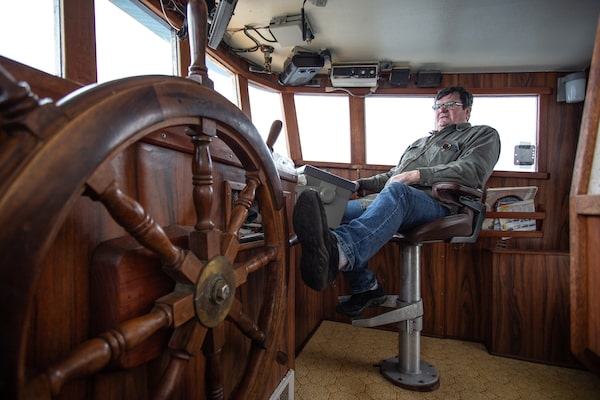
Mr. Wagner worries about the future of eulachon on the Unuk, but this year, he was once again able to fill his five-gallon bucket for the season.Nathan VanderKlippe/The Globe and Mail
Indigenous rights and resources: More from The Globe and Mail
The Decibel podcast
To dig for valuable minerals in Ontario’s Ring of Fire, mining companies must get local First Nations on board - and the leader of one of them, Marten Falls, sees that as an important step in economic reconciliation. Mining reporter Niall McGee visited the nation and spoke with The Decibel about what he learned. Subscribe for more episodes.
Indigenous loan guarantee program could transform resource sector in Canada
Indigenous communities are leading Canada’s clean energy transition
As B.C. bets on mining to meet climate goals, taxpayers are at risk to cover cleanup costs
 Nathan VanderKlippe
Nathan VanderKlippe